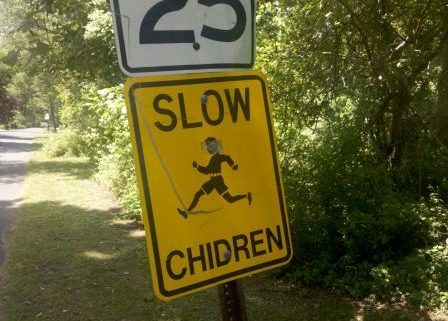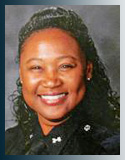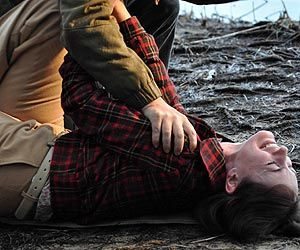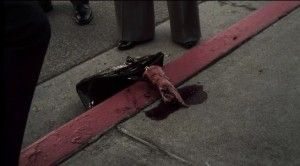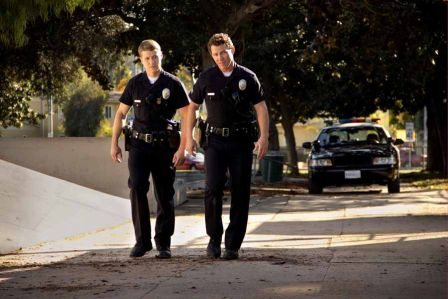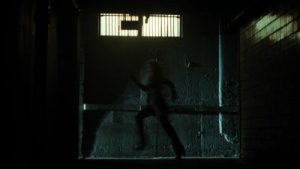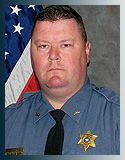Words can be tricky things, often spelled quite differently than how they sound, coming from foreign languages with different sets of rules, or being just plain weird. It’s no wonder then that so many people struggle with spelling, even those who are generally regarded as having some seriously brilliant minds. No, it’s not just grade-schoolers, college students, and the everyday man who struggles with the age old “i before e” dilemma, but also scientists, writers, and world leaders. Here, you’ll find a list of great thinkers who made great strides in their respective fields, but never could quite conquer the perils of spelling.
-
Alfred Mosher Butts
 Unfamiliar with this name? Well, you’re probably familiar with what he created, though it might surprise you to learn that Butts was a bad speller. He created the iconic and still quite popular game Scrabble, which requires one to be adept at spelling. The inventor himself was admittedly not the best speller, often scoring only 300 points on average in a game of Scrabble.
Unfamiliar with this name? Well, you’re probably familiar with what he created, though it might surprise you to learn that Butts was a bad speller. He created the iconic and still quite popular game Scrabble, which requires one to be adept at spelling. The inventor himself was admittedly not the best speller, often scoring only 300 points on average in a game of Scrabble. -
William Faulkner
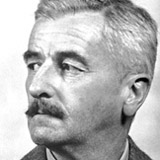 Faulkner wasn’t a truly terrible speller, but if you take a look at his original manuscripts there are some definite errors the iconic Southern author wouldn’t have wanted to see in print. Despite setting many of his famous books and short stories in the difficult to spell and pronounce Yoknapatawpha County, Faulkner’s editors confirm that despite their repeated attempts to point out his mistakes, he made spelling errors all through his career.
Faulkner wasn’t a truly terrible speller, but if you take a look at his original manuscripts there are some definite errors the iconic Southern author wouldn’t have wanted to see in print. Despite setting many of his famous books and short stories in the difficult to spell and pronounce Yoknapatawpha County, Faulkner’s editors confirm that despite their repeated attempts to point out his mistakes, he made spelling errors all through his career. -
F. Scott Fitzgerald
 Few writers are so known for their bad spelling as Fitzgerald. How bad, you say? Fitzgerald wasn’t even able to spell the name of one of his closest friends, Hemingway, often misaddressing him in correspondence and papers as “Earnest Hemminway.” The editor of his collected letters called him a “lamentable speller” who struggled with words like “definite” and “criticism.” Still, his poor spelling didn’t seem to do the author any harm, and many of his works are regarded as literary masterpieces today.
Few writers are so known for their bad spelling as Fitzgerald. How bad, you say? Fitzgerald wasn’t even able to spell the name of one of his closest friends, Hemingway, often misaddressing him in correspondence and papers as “Earnest Hemminway.” The editor of his collected letters called him a “lamentable speller” who struggled with words like “definite” and “criticism.” Still, his poor spelling didn’t seem to do the author any harm, and many of his works are regarded as literary masterpieces today. -
Ernest Hemingway
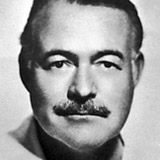 Ernest Hemingway may not have had much room to judge when it came to his friend Fitzgerald not spelling his name correctly. Long before the days of spell check, Hemingway had to rely on newspaper and book editors to catch his mistakes, a job which they often complained would be a lot easier if he would make an effort to spell things correctly (though Hemingway retorted that that’s what they were being paid to do).
Ernest Hemingway may not have had much room to judge when it came to his friend Fitzgerald not spelling his name correctly. Long before the days of spell check, Hemingway had to rely on newspaper and book editors to catch his mistakes, a job which they often complained would be a lot easier if he would make an effort to spell things correctly (though Hemingway retorted that that’s what they were being paid to do). -
John Keats
 The brilliant Keats died quite young at only 26, so one can hardly blame him for not spending time worrying about spelling in his written works. If readers want to get a taste of his more interesting spelling choices, they only need turn to his letters. They record many odd spelling choices, including the misspelling of purple as “purplue” in a letter to his love Fanny Brawne, a misspelling which she questioned and Keats tried to cover up by saying he was creating a new combination of purple and blue.
The brilliant Keats died quite young at only 26, so one can hardly blame him for not spending time worrying about spelling in his written works. If readers want to get a taste of his more interesting spelling choices, they only need turn to his letters. They record many odd spelling choices, including the misspelling of purple as “purplue” in a letter to his love Fanny Brawne, a misspelling which she questioned and Keats tried to cover up by saying he was creating a new combination of purple and blue. -
Jane Austen
 Jane Austen may have a place among the literary elites today, but when it came to spelling and grammar she wasn’t too handy with either. Research into her personal letters and manuscripts has exposed numerous errors in spelling and grammar that were corrected later by her early editor, William Gifford. One of her favorite misspellings? She often spelled “scissors” as “scissars.”
Jane Austen may have a place among the literary elites today, but when it came to spelling and grammar she wasn’t too handy with either. Research into her personal letters and manuscripts has exposed numerous errors in spelling and grammar that were corrected later by her early editor, William Gifford. One of her favorite misspellings? She often spelled “scissors” as “scissars.” -
Fannie Flagg
 Actress and author Fannie Flagg has had great success in her literary career, most notably with the novel Fried Green Tomatoes at the Whistle Stop Cafe which was later adapted into a highly successful film. Yet writing never came easy to Flagg, who has dyslexia. She has said she was challenged as a writer because she was “severely dyslexic and couldn’t spell, still can’t spell. So I was discouraged from writing and embarrassed.” Flagg obviously overcame her embarrassment, and has since written numerous books and screenplays.
Actress and author Fannie Flagg has had great success in her literary career, most notably with the novel Fried Green Tomatoes at the Whistle Stop Cafe which was later adapted into a highly successful film. Yet writing never came easy to Flagg, who has dyslexia. She has said she was challenged as a writer because she was “severely dyslexic and couldn’t spell, still can’t spell. So I was discouraged from writing and embarrassed.” Flagg obviously overcame her embarrassment, and has since written numerous books and screenplays. -
Albert Einstein
 Being bilingual, one could hardly blame Einstein for being a bad speller in English. Yet it wasn’t just in English that Einstein struggled. He also was a pretty bad speller in his native German, and got even worse when he began using English more regularly. Of course, Einstein didn’t make those same errors when it came to writing mathematical equations, a fact that helped to make his name synonymous with genius today.
Being bilingual, one could hardly blame Einstein for being a bad speller in English. Yet it wasn’t just in English that Einstein struggled. He also was a pretty bad speller in his native German, and got even worse when he began using English more regularly. Of course, Einstein didn’t make those same errors when it came to writing mathematical equations, a fact that helped to make his name synonymous with genius today. -
Winston Churchill
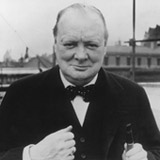 While today Churchill may be regarded as a great leader and speaker, he had a rough start in his schooling, always struggling with spelling and writing. He was a notoriously bad speller throughout his life, but he never let it hold him back. He battled through his difficulties, which also included a speech impediment, to leave his mark on the world.
While today Churchill may be regarded as a great leader and speaker, he had a rough start in his schooling, always struggling with spelling and writing. He was a notoriously bad speller throughout his life, but he never let it hold him back. He battled through his difficulties, which also included a speech impediment, to leave his mark on the world. -
Leonardo Da Vinci
 Leonardo helped define the term “Renaissance man,” excelling in both the arts and the sciences, but spelling may not have been his forte. He is quoted as having once said, “You should prefer a good scientist without literary abilities than a literate one without scientific skills.” Some historians believe he may have been dyslexic (there is no way to prove that, of course) as his journals and writings are riddled with spelling errors common with dyslexics.
Leonardo helped define the term “Renaissance man,” excelling in both the arts and the sciences, but spelling may not have been his forte. He is quoted as having once said, “You should prefer a good scientist without literary abilities than a literate one without scientific skills.” Some historians believe he may have been dyslexic (there is no way to prove that, of course) as his journals and writings are riddled with spelling errors common with dyslexics. -
Agatha Christie
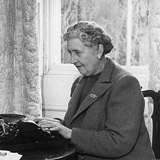 Agatha Christie penned some of the bestselling books ever created, but the author admitted once, “I, myself, was always recognized … as the “slow one” in the family. It was quite true, and I knew it and accepted it. Writing and spelling were always terribly difficult for me. My letters were without originality. I was … an extraordinarily bad speller and have remained so until this day.” Despite her struggles with spelling, Christie was an enormously successful writer, and has gone down in the Guinness Book of World Records as the best-selling novelist of all time.
Agatha Christie penned some of the bestselling books ever created, but the author admitted once, “I, myself, was always recognized … as the “slow one” in the family. It was quite true, and I knew it and accepted it. Writing and spelling were always terribly difficult for me. My letters were without originality. I was … an extraordinarily bad speller and have remained so until this day.” Despite her struggles with spelling, Christie was an enormously successful writer, and has gone down in the Guinness Book of World Records as the best-selling novelist of all time. -
John F. Kennedy Jr.
 JFK is a figure that has fascinated the American public for decades, but what many may not know is just how bad of a speller the famous president was. He was outed for his poor spelling by his wife, Jackie, though she was a French literature major in college and would later become a book editor, so she may have been a pretty harsh critic.
JFK is a figure that has fascinated the American public for decades, but what many may not know is just how bad of a speller the famous president was. He was outed for his poor spelling by his wife, Jackie, though she was a French literature major in college and would later become a book editor, so she may have been a pretty harsh critic. -
W.B. Yeats
 Yeats is yet another famous author who, while quite adept at writing, was pretty terrible when it came to spelling. To see examples of his spelling errors, one need only find a copy of his collected letters which contain misspellings like “feal” for “feel” and “sleap” for “sleep”. Despite his inadequacy when it came to spelling, Yeats was a prolific and very successful writer, winning a Nobel Prize for Literature in 1923.
Yeats is yet another famous author who, while quite adept at writing, was pretty terrible when it came to spelling. To see examples of his spelling errors, one need only find a copy of his collected letters which contain misspellings like “feal” for “feel” and “sleap” for “sleep”. Despite his inadequacy when it came to spelling, Yeats was a prolific and very successful writer, winning a Nobel Prize for Literature in 1923. -
John Irving
 John Irving is another author on this list whose poor spelling was the result of dyslexia. Sadly, Irving wasn’t recognized as having dyslexia until much later in his life, stating, “The diagnosis of dyslexia wasn’t available in the late fifties — bad spelling like mine was considered a psychological problem by the language therapist who evaluated my mysterious case. When the repeated courses of language therapy were judged to have had no discernible influence on me, I was turned over to the school psychiatrist.” Irving’s struggles with spelling affected him deeply, and he even reflects on them in one of his most famous novels, The World According to Garp, stating that English is such a mishmash of different languages that no one should ever feel stupid for being a bad speller.
John Irving is another author on this list whose poor spelling was the result of dyslexia. Sadly, Irving wasn’t recognized as having dyslexia until much later in his life, stating, “The diagnosis of dyslexia wasn’t available in the late fifties — bad spelling like mine was considered a psychological problem by the language therapist who evaluated my mysterious case. When the repeated courses of language therapy were judged to have had no discernible influence on me, I was turned over to the school psychiatrist.” Irving’s struggles with spelling affected him deeply, and he even reflects on them in one of his most famous novels, The World According to Garp, stating that English is such a mishmash of different languages that no one should ever feel stupid for being a bad speller. -
Benjamin Franklin
 Ben Franklin wasn’t a particularly good speller in his time, and actually felt that the alphabet as it stood (and still does today) was what was holding so many back from being able to spell. In a letter he once wrote, “You need not be concerned in writing to me about your bad spelling, for in my opinion as our alphabet now stands the bad spelling, or what is called so, is generally best, as conforming to the sound of the letters and of the words.” Whether you struggle with spelling or not, you have to admit he has a point, as many words are spelled quite differently than they sound.
Ben Franklin wasn’t a particularly good speller in his time, and actually felt that the alphabet as it stood (and still does today) was what was holding so many back from being able to spell. In a letter he once wrote, “You need not be concerned in writing to me about your bad spelling, for in my opinion as our alphabet now stands the bad spelling, or what is called so, is generally best, as conforming to the sound of the letters and of the words.” Whether you struggle with spelling or not, you have to admit he has a point, as many words are spelled quite differently than they sound.
* Today’s article brought to you by www.onlinecollegecourses.com

